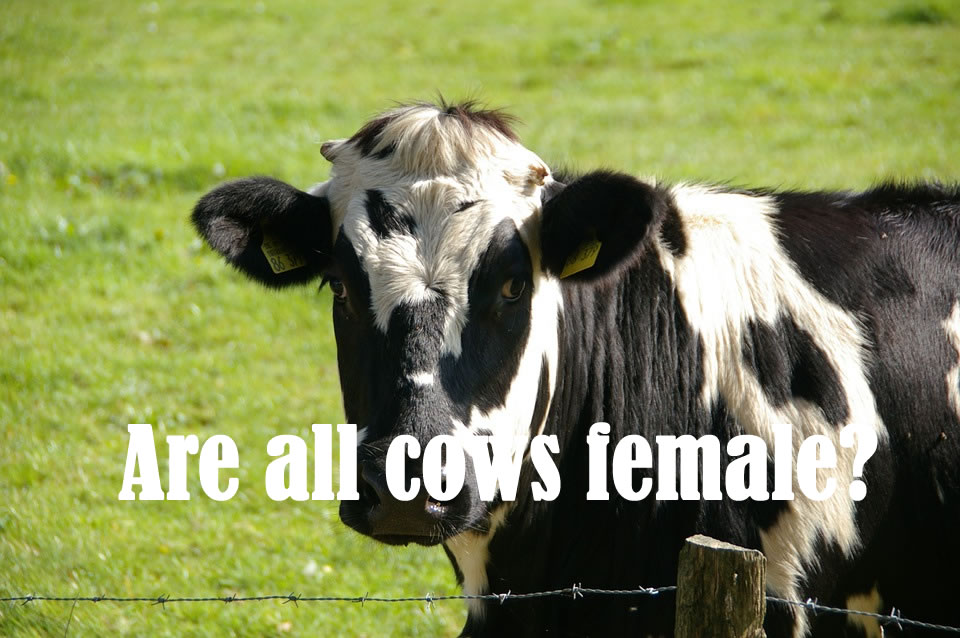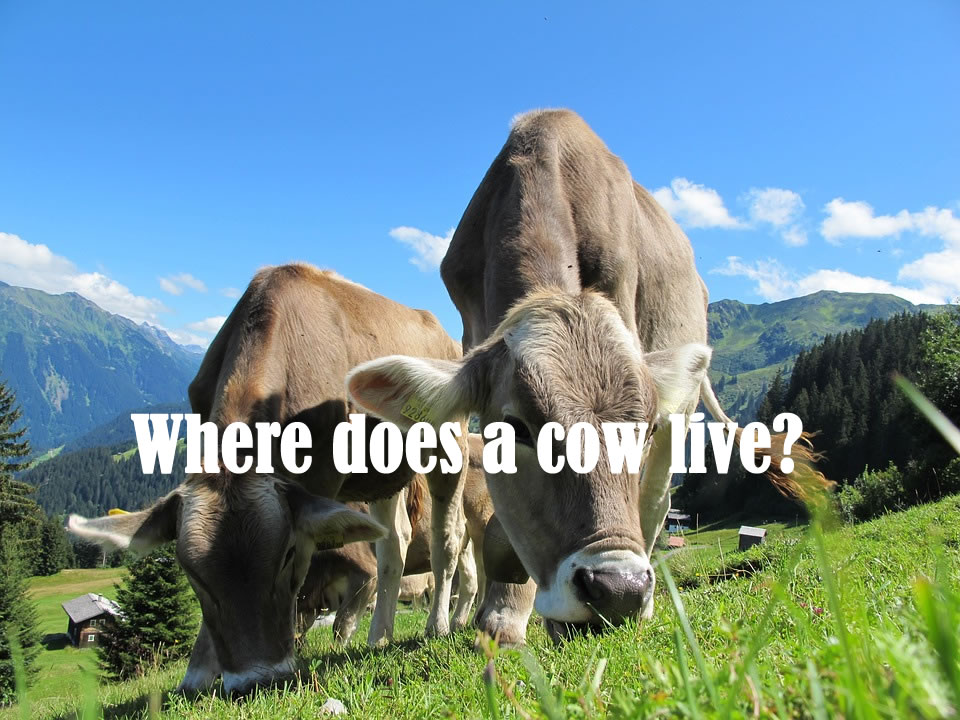The more experience you have with anything, the more subtleties and nuances you’ll find that were first overlooked yet ended up being important to your success. Cattle farming is the same way. If you’re looking at cows for your farm as I am, you might not be familiar with some of the jargon.
And therefore, can we assume that all cows are female? The short answer is that all cows are female. Still, a cow is a common synonym for “cattle” among the general public.
The first step is to be conversant in the universally used language so that you don’t accidentally purchase a cow while you’re in the market for a bull.
So, what exactly are the fundamental terms that you need to grasp?
Bull – Male Cattle
Bulls are adult males with the ability to impregnate cows. As a matter of fact, that is their principal function in the cattle business. If provoked, they may become dangerously hostile and do severe harm to any animal or person they see as a threat.
Cow
In several animals, including cattle, the term “cow” is used to refer to an adult female mammal. At least a year old, it should have given birth to a calf or be in the process of doing so. Cows are gentle, domesticated mammals that are primarily raised for the purposes of reproduction, milk production, and food consumption.
Steer – Beef Cattle
Steer refers to a bull that has been sterilized. Castration is the surgical removal of the testicles, which prevents the animal from inseminating a cow. Steers, which are often more tame than bulls, serve primarily as a meat source.
Bull Calves (Steer)
Castration transforms male calf fetuses, known as bull calves, into females, known as steers. Steer refers to a castrated bull or a male bovine whose testicles have been removed. It’s easier to work with steer than bulls since they’re more malleable. Meat from steers is among the most often consumed types of beef.
Heifer – Dairy Cows
A heifer is any young female cow that has not yet given birth. All the benefits connected with cows, breeding, and the milk/meat industry also apply to them.
Stocker Cow
The stocker breed of cattle has a mountainous background. It describes springtime purchases of animals that are then turned loose to graze in mountain meadows until they reach the desired weight. Stocker cattle are typically raised and fed until they reach a desirable weight, at which point they are sold. The gender of a stocker cow might vary.
The gender of a stocker cow might vary.
The purpose of bulls is to increase the population of cows. Within the span of a typical mating season, a mature bull of around two years old will likely mate with about thirty different females. It is predicted that younger bulls will do about half of the total number of services. The surplus male calves are referred to as Bobby’s calves and are given back to the slaughterhouse when they reach the ages of five or nine weeks. Although the skins of all cattle breeds may be used to create leather, specialists agree that the hides from Bobby cattle result in a particularly supple finished product. Among all livestock, the deaths of young male calves on dairy farms are among the most tragic. Bobby’s calves is a common nickname for them.
Domestication and economic production
As of 2016, there were more than a billion cows in the world, with the largest herds being in China, Argentina, Brazil, and India. Domestication of the cow from the wild Auroch occurred between 8,000 and 10,000 years ago. This native species once inhabited the eastern half of the globe. We now have two major types of cattle: the zebu or humped cattle from eastern Asia (B. tumera indicus) and the cattle without humps (B tumera) from the west. After having their calves, the milk cows continue to produce milk for another nine to ten months. The typical dairy cow is milked twice day and continues to produce milk.
How can I tell the different forms of cattle apart?
Cattle are castrated when they are males to prevent them from ever becoming bulls, who have superior muscular resistance and a unique appreciation for their owners. Both horses and cows have longer, wider muzzles and shorter, narrower necks than men. Even though heifers look like dairy cows, they really have small hips and backs. Cattle horns, which can be found on both sexes and vary depending on breed, have nothing to do with the animals’ temperament. Coloring is determined in the same way, but just by the breed.
Temperament and emotions
Researchers found a consistent behavioral and physiological difference between adult and juvenile Holstein-Friesian sheep as they learned to walk. The higher-performing cows in terms of weight gain and cardiovascular health were also the ones whose knowledge increased the most. This is how a horse could react emotionally after making progress in her training. When people respond negatively to unfavorable judgment task results, they experience unpleasant emotions.
Domestic cattle
The family Artiodactyla includes cows. Even-toed hoofed animals make up this order, and cows are easily distinguished by their characteristic cloven hooves. Cattle are part of the family Bos, the tribe Bovini (which also contains bison and yak), and the order Bovidae (hollow-horned ruminates). The word “bos” is the root of many of the names in the genus Bos. Cows, as well as the species in which they are found, get their names from bos.
A Stocker vs a Heifer
Bulls in a grazing area are chosen randomly, regardless of their gender. Bulls are sometimes unwelcome since they are more aggressive and like to mate with females. A heifer’s versatility may be utilized for reproduction and meat. Shearing cows aren’t considered breeding breeds because of the specific needs the industry has for them. Because of their tendency to sire inconvenient offspring, bulls have earned a bad reputation.
Natural history
An adult male weighs between 470 and 1,800 kilograms (1,000 and 4,000 pounds), whereas an adult female weighs between 360 and 1,100 kilograms (800–2,400 pounds). Horns can be found in both sexes. Cows are well-known for their abundant milk production because to their udders, which are made up of four fleshy teats. They have 33 teeth overall but no incisors or canine-earl incisors. However, they do not employ gummy pads to mow the lawn.
Senses
When given the choice, cattle appear to prefer a diet composed of around 70% clover and 30% grass. Clover is chosen in the morning, whereas grasses are favoured in the evening, indicating a diurnal pattern. Cattle use all five of the commonly recognized senses. Complex habits like grazing can be developed with this help.
Vision
Cattle rely heavily on their vision, which accounts for over half of the information they take in. Instead of being at the front of their head, their eyes are on either side, aiding in their ability to spot potential threats. The result is a 330-degree range of view, yet their binocular vision is only 30-50 degrees wide, compared to 140 for humans. In spite of their superior vision, cattle suffer from poor visual accommodations. Cattle, particularly bulls, have a bad rap because of the false belief that the color red causes them to be easily startled. As the old adage goes, “as a red flag for a bull,” it’s a very provoking shade of hue. Even animals have a knack for color theory and can tell medium green from long and short blue.
Hearing
The range of audible frequencies for cattle is 25 kHz to 35 kHz. They have a low threshold of 21 db and a sensitivity frequency of 8 kHz. The horses can’t hear as well as they can. Cattle use vocalized sounds to communicate with one another, and these calls might reveal the caller’s age, sex, and dominant status or a sexual position. Cows’ sounds help calves identify their moms. This singing activity might contribute to the suggestion issues and the aggressive behavior of bulls. Due to their large foveal field, cattle may have trouble pinpointing their location using sound alone.
Taste
One’s sense of taste is in direct proportion to his or her current hunger. Due to the low sodium content of these plants and the horses’ keen sense of smell, they were able to receive the salt they needed to maintain a healthy ruminal environment. Cattle have higher movement for the same purpose when sodium salt is decreased in pigs. In response to biochemical disturbance brought on by sodium salt deficiency, olfactory and gustatory receptors sensitive to detecting low concentrations of sodium salt become more sensitive, aiding the search. [84] If there isn’t enough salt for the livestock. Observational evidence suggests a rise. Locomotors. Hmm, I guess I’ll have to go get some water.
Senses of smell and taste
Cows’ behavior alters in response to the smell of dog excrement just before feeding time. Stressed cattle release alarms in their urine that may be detected by other animals. Cattle can learn to olfactorily distinguish their own kind under controlled lab settings. Cattle rely on their sense of smell to verify the information they receive from their other senses. Urine and blood taste from stressed or unstressed patients has little effect. Animals may be taught to identify a certain individual in the lab, making it such that they can tell the difference between two animals that share a scent but are otherwise unidentifiable.
Magnetoreception
Several investigations have demonstrated that people, like cattle, have magnetoreception. Researchers have noticed that while cattle are relaxing or grazing, they often line up their bodies along the geomagnetic north-south axis. Research revealing a unique alignment pattern in cattle subjected to various magnetic fields found that these lines formed when the livestock was either directly underneath Power Lines or quite close to them. However, in 2011, a team of Czech researchers said they had failed at recreating the discovery using Google Earth imagery.
Touch
The presence of mechano-reactive proteins and the activity of thermo-reactive and nociceptive proteins on the skin and muscles enable the cow to experience varying degrees of the same tactile sensations as humans. They are commonly employed by animals to scout out new area.





